Świdwin 2024-11-12
Świdwin Railway Station.
Geographic coordinates: 53.782N 15.773E. Elevation 87.00 m (285.43 ft). Address: Plac Lotników 6, 78-300 Świdwin.
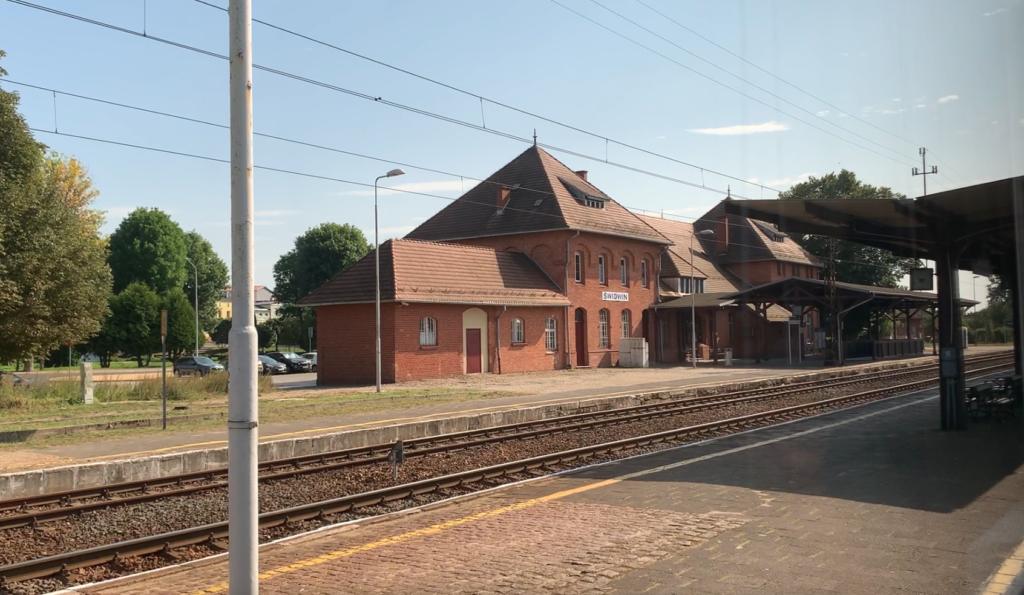
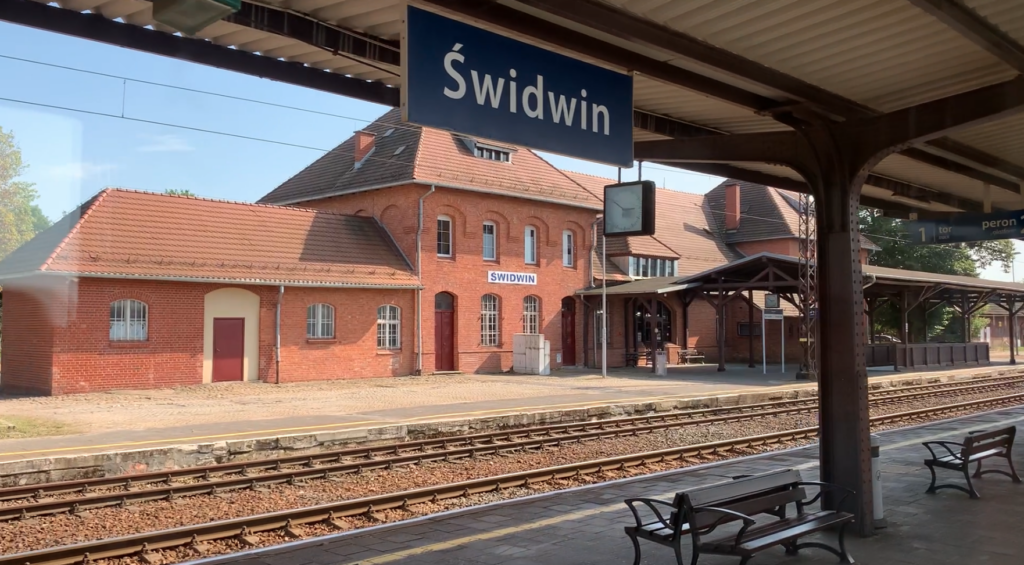
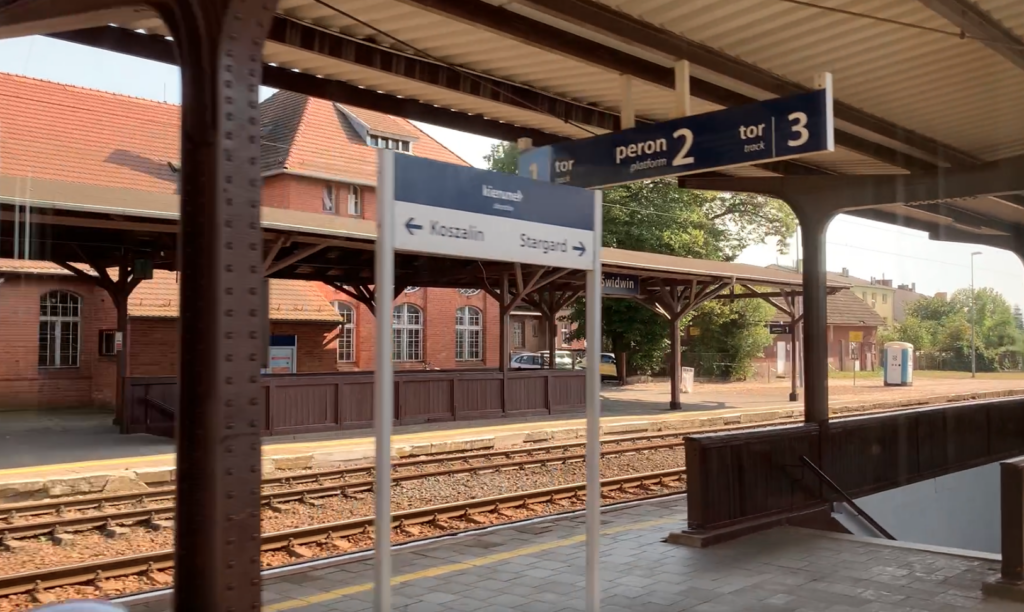
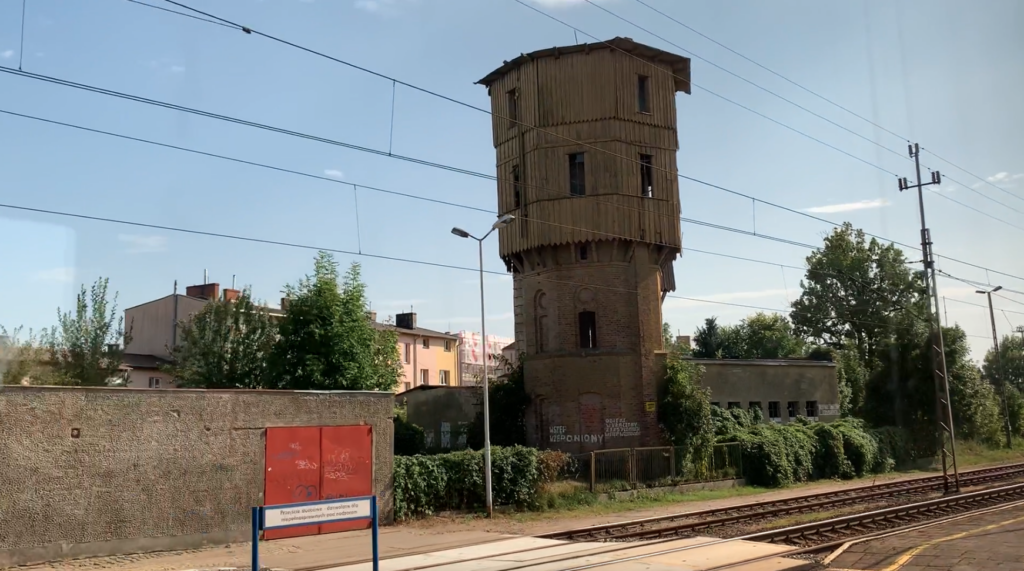
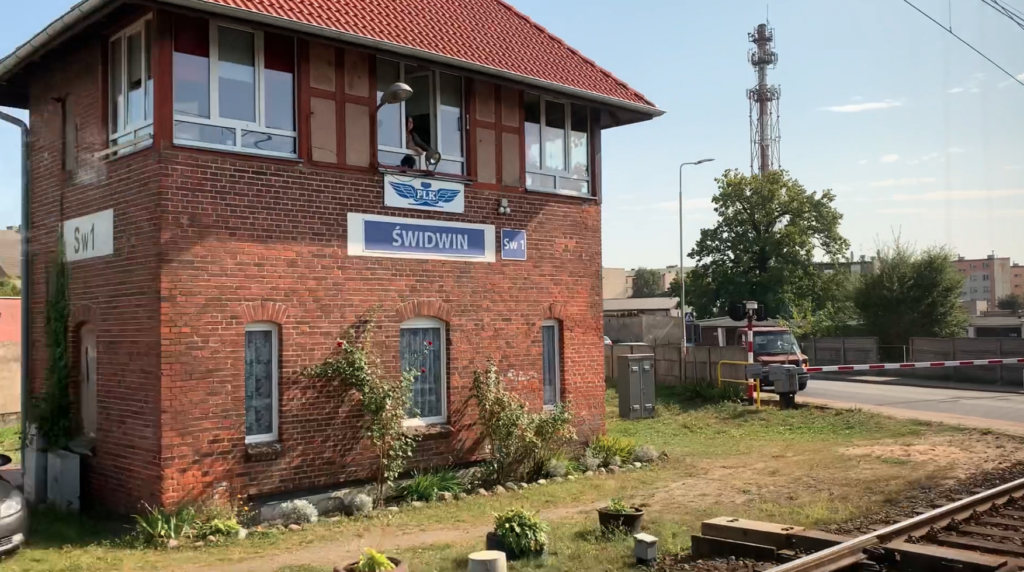
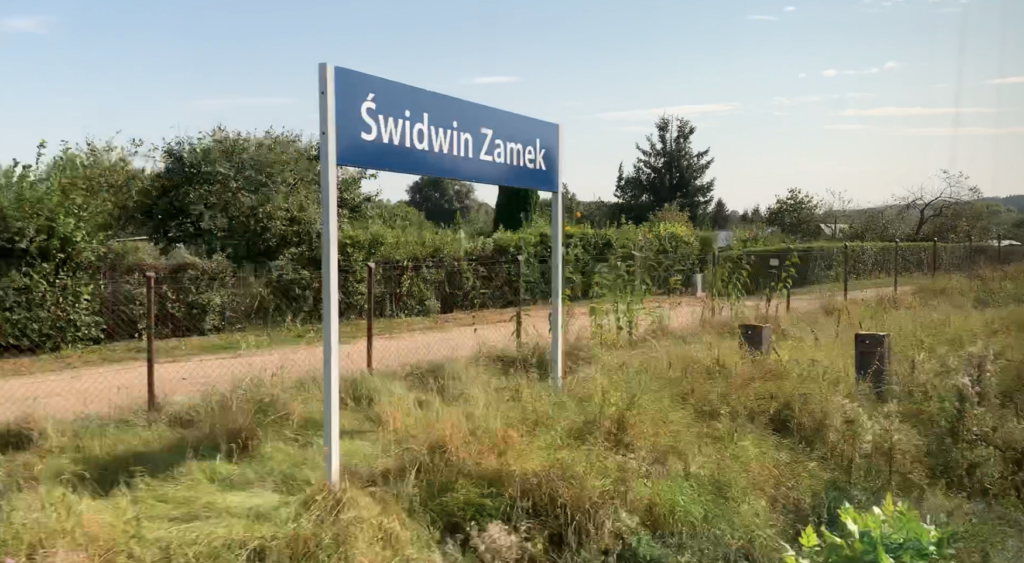
City of Świdwin.
Świdwin is the seat of the City, County and Commune. It is the seat of the County Police Headquarters, the County Fire Department Headquarters and there is a military garrison. The city is located in northwestern Poland, in the West Pomeranian Voivodeship. It is located on the Łobez Upland on the Rega River, on provincial roads: No. 151, No. 152, No. 162. Lake Bukowiec is located within the city’s administrative boundaries. According to data from June 30, 2010, the city had 15,503 inhabitants. In the period 1975-1998, the city administratively belonged to the Koszalin Voivodeship. Parts of the city also include the towns of Buczyna, Rycerskie Dobra, Szczytniki, Świdwinek. According to data from January 1, 2009, the city’s area was 22.38 square kilometers. The city makes up 2.06% of the county, 41% of the city’s area is arable land, and 4% is forest land. Świdwin is a center of the food, wood, machinery, plastics processing and, until recently, knitwear industries.
After World War II, the greats of this world decided to incorporate the Pomeranian Lake District into Poland, and therefore Świdwin as well. The city was originally called Świbowina and only after consultations with Polish scientists, by the regulation of the Ministers of Public Administration and Recovered Territories of May 7, 1946, the name Świdwin was introduced. In the period 1946-1947, the remaining Germans were displaced.
Świdwin Railway Station.
The Świdwin railway station is one of the most important railway points in the West Pomeranian Voivodeship, with a rich history related to the development of railway infrastructure in Western Pomerania. Its beginnings date back to the second half of the 19th century, when the development of the railway network in this part of Europe was gaining momentum.
The Świdwin station was established in 1859, as part of the Prussian Eastern Railway (Ostbahn), one of the key railway investments of the then Prussia, aimed at connecting Berlin with Królewiec. It was the second route, on the route of which Świdwin, Białogard, Koszalin, Słupsk and Gdańsk were located. The opening of this route was an important moment for the region, as it enabled the transport of goods and people much faster than before. Świdwin was on the route between Szczecin and Gdańsk, which contributed to the economic development of the city and the entire district. The first train arrived at Świdnik station on June 1, 1859, traveling from Stargard to Koszalin.
In 1893, the city councilors of Świdwin seriously considered the plan to build a Świdwin–Resko railway line. Preparatory work was even started, but in 1898, the plans fell through. However, in 1906, the Worowo–Resko line was built, which solved the problem (LK No. 420).
In 1897, a project was created to build a narrow-gauge railway line from Świdwin to Sławoborze. The plans were not implemented. Let us remember that in that area and at that time, narrow-gauge railways were very popular. Mainly due to lower construction and operating costs. On the other hand, narrow-gauge lines have lower capacity and increased travel time.
Even in Germanic times, in the period 1923-1929, there were plans to build a new standard-gauge railway line; Kołobrzeg – Świdwin – Krzyż. The plans were not implemented due to the lack of a license issued by Berlin and preparations for another world war. After the Great World War and the creation of the Free City of Gdańsk and the division of the Prussian regions, the station in Świdwin continued to play an important role in the region. It maintained connections both within Germany and in international traffic. Despite political and economic changes, the railway network was intensively used for the transport of agricultural goods, especially since the region of Western Pomerania was an agricultural and processing area. The railway also served smaller seaports on the Baltic Sea; Kołobrzeg and Ustka.
But the stupid Germans started World War II and lost a lot. As a result of the border changes after World War II, Świdwin found itself within the borders of Poland. The railway infrastructure was significantly damaged. Mainly by Soviet trophy troops, who dismantled the railway tracks, switches, railway traffic control devices; and took them to Moscow. Polish railway workers quickly took repair actions to resume connections in the difficult post-war period. The station in Świdwin was incorporated into the Polish State Railways (PKP), and new connections enabled transport towards Szczecin, Białogard and Kołobrzeg. Initially, repatriates from the Kresy and central Poland were transported to the so-called Recovered Territories, and over time more and more goods were transported.
In the 1970s, Świdwin station was modernized and the infrastructure was modernized to meet the requirements of the growing passenger and freight traffic. Electrification was introduced, which allowed for an increase in the frequency of train services. The Pomeranian Lakeland is an area of Poland where important routes run meridionally and they were electrified. Latitudinal routes are definitely less important for the national economy. During this period, Świdwin gained direct connections with many Polish cities, which contributed to the development of the city and the surrounding areas.
The railway station in Świdwin is similar to stations in this part of Poland and, for example, is identical to the station in Runowo Pomorskie. Its current appearance is the result of expansion in 1901. Fortunately, the station escaped destruction by Soviet soldiers in 1945. The building contained ticket and luggage offices, waiting rooms, a restaurant, service rooms, and apartments. The restaurant was only available to passengers with Class 1 and 2 tickets. Toilets were located in a separate building, between the station and the water tower. Currently, a ToyToy cabin is available to passengers. The square in front of the station was paved.
Around 1910, the station acquired the layout that exists to this day. There are two platforms at the station. Platform 1 is a single-edge platform and is located at the station. Platform 2 is an island platform and has two platform edges. There is a roof on both platforms, which after recent renovations was covered with trapezoidal sheet metal. The structure of the shelter on Platform 1 is wooden, and on Platform 2 it is steel, riveted. The surface on the platforms is made of small stone cubes, typical of Germanic solutions. As a result of various damages, the surface was supplemented with gray pavement tiles and asphalt. There are white edge lines and yellow warning lines on the platforms. The platforms are of medium height, i.e. 0.30 m from the railhead. Access to Platform 2 is provided by a tunnel leading from Platform 1. Trolleys with parcels, letters and luggage passed through two crossings to the platform.
The last major renovation at Świdwin station was carried out in 2005. The last shape semaphores were replaced with light semaphores. Among others, the entry semaphore from the Smardzko station side. The rail-road crossings controlled from the crossing guards’ booths were replaced with remote control from the signal box with “Sw”. New barriers, traffic lights and CCTV cameras appeared at the crossings. Some railway turnouts and wooden sleepers were replaced with pre-stressed concrete ones with spring fastenings. Additionally, the entire station was weeded and self-sown trees were removed. The station has a signal box with “Sw” and an executive box with „Sw1″.
An octagonal water tower was built near the station. The tower’s shaft is plastered, and the reservoir level is covered with boarding. There was a locomotive shed at Świdwin station, which was dismantled around 2000. Only a single-station fire station remained, by the water tower. There was a locomotive turntable. The locomotive shed was located between Batalionów Chłopskich Street and the water tower. There was also a coal embankment with a crane, of which a concrete base remains. On the western side of the station, storage yards, warehouses and a large mill were built. Currently, there is also a scrap metal collection point. Several apartment blocks for railway employees and their families were built near the station. There was also a post office building (Poczta Polska) and the railway protection service.
Currently (2024), the railway station in Świdwin serves both passenger and freight traffic. It is an important stop for regional trains and some long-distance trains, providing connections to Stargard, Szczecin, Kołobrzeg, Koszalin, Słupsk and Gdańsk. All railway lines reaching Świdwin station are single-track. There is no ticket office at the station. Tickets can be purchased online or on the train. On November 12, 2024, 27 trains departed from Świdwin station. It was possible to depart to the following stations: Białystok, Gdańsk Główny, Koszalin, Olsztyn Główny, Słupsk, Szczecin Główny. PolRegio and InterCity trains stop at the station: 81104 RYBAK, 85100 ALBATROS, 85108 STAŃCZYK, 85102 ŻUŁAWY, 85106 GRYF, 85104 BRYZA.
In 2023, a passenger stop Świdwin Zamek was built in the city, which improved the accessibility of the railway for residents. All trains of the PolRegio carrier stop at the stop. The Świdwin Zamek stop is located near the rail-road crossing at Niedziałkowskiego Street.
Railway Line No. 202 Gdańsk Główny – Stargard.
LK No. 202 Gdańsk Główny – Stargard runs through Świdwin station, which stretches in the northern part of Poland, in the latitudinal direction and runs through the Pomeranian Voivodeship and the West Pomeranian Voivodeship. LK No. 202 has a length of 334.363 km. The line is electrified with 3 kV DC. The maximum speed of the train is 140 km/h. The line is single-track and double-track. Świdwin station is located on 255.108 km of the line. Launch of the railway line; 1859.06.01 Stargard – Koszalin. 1869.07.01 Koszalin – Słupsk. 1870.09.01 Słupsk – Gdańsk Główny. Construction of the second track; 1909, Lębork – Słupsk. 1909, Białogard – Runowo Pomorskie. 1902, Runowo Pomorskie – Stargard. In 1945, the second track was dismantled by the Soviets. 1953, Runowo Pomorskie – Chociwel. 1955, Chociwel – Ulikowo. By 2024, it had not been possible to rebuild the second track on the entire LK No. 202. Electrification was carried out in stages; 1969.09.13 Gdańsk Główny – Gdynia Główna. 1969.10.19 Rumia – Wejherowo. 1989.09.06 Wejherowo – Słupsk. 1988.12.02 Koszalin – Słupsk. 1988.06.30 Białogard – Koszalin. 1987.12.15 Świdwin – Białogard. 1987.07.15 Runowo Pomorskie – Świdwin. 1986.12.16 Stargard – Runowo Pomorskie.
Railway Line No. 421 Świdwin – Połczyn Zdrój.
The airport is located on railway track No. 421, leading from Świdwin to Połczyn Zdrój, i.e. latitudinally. Distance of about 25 km. The line is single-track, non-electrified, with low freight traffic. Interestingly, in 1996, passenger traffic was closed. In the following years, freight traffic was irregular, but in 2005, it was completely stopped. In 2006, freight traffic was resumed on the Świdwin – Smardzko section, only for the needs of the army and airport supplies. Any train passage takes place only with the consent of the dispatcher at the Świdwin station. The line practically runs through the area of the air base. Two sidings branch off from this line to the airport. The first one to the north to the MPS depot. The second one to the south to the central heating boiler room, which heats both the barracks and headquarters part and the Smardzko housing estate. During the construction of the airport, most of the necessary materials and raw materials were delivered by rail.
Historically, the line was opened in sections. On November 16, 1896, the Cieszeniewo – Świdwin section was opened: End of LK421. On December 22, 1896, the Redło – Cieszeniewo section was opened. On March 17, 1897, the Stare Ludzicko – Redło section was opened. On April 1, 1897, the Połczyn Zdrój – Stare Ludzicko section was opened. The line was never electrified. On March 25, 1996, passenger traffic was closed. On May 1, 1999, freight traffic was closed on the Połczyn Zdrój – Smardzko section. In the period 2004-2005, the line is impassable. In 2006, the Smardzko – Świdwin section was renovated. In 2013-2014, the Połczyn Zdrój – Smardzko section was dismantled and designated for bike paths and dirt roads.
Written by Karol Placha Hetman
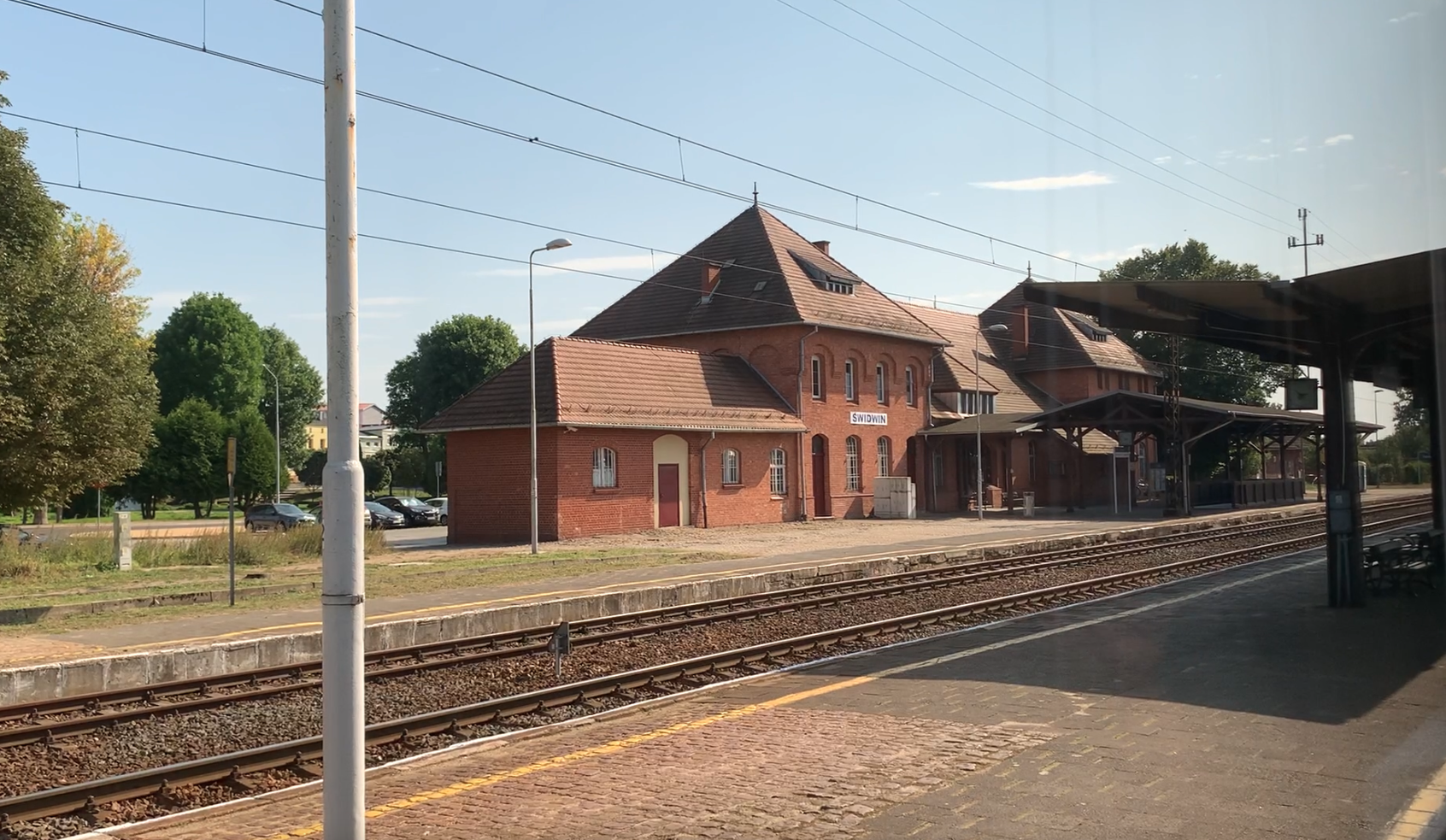
Leave a Reply
You must be logged in to post a comment.